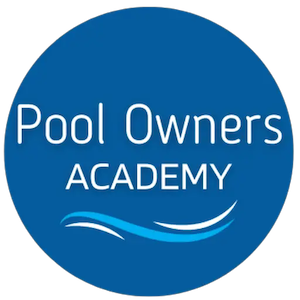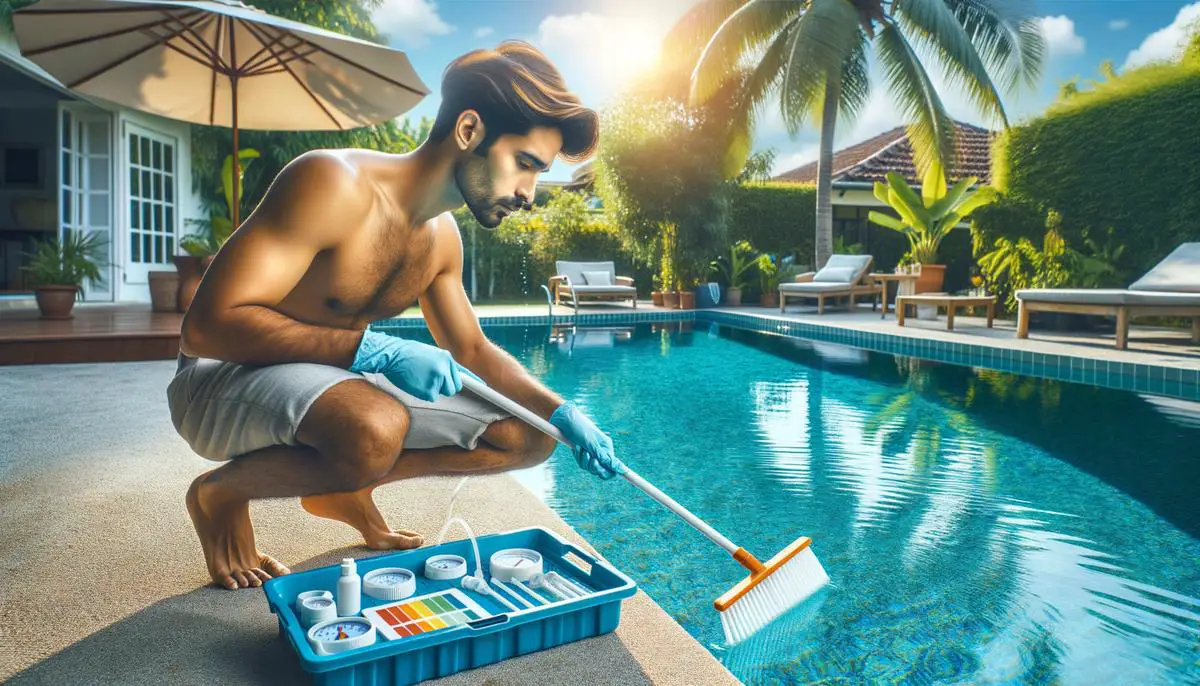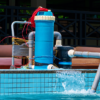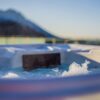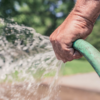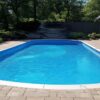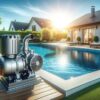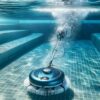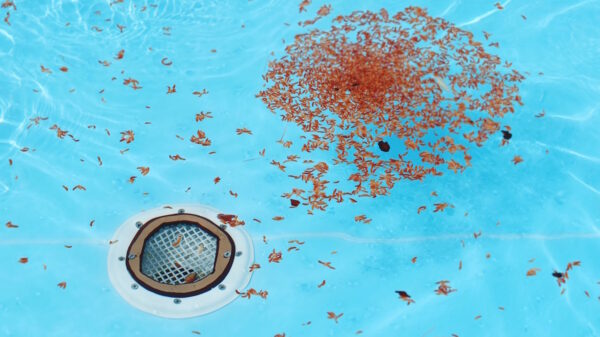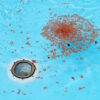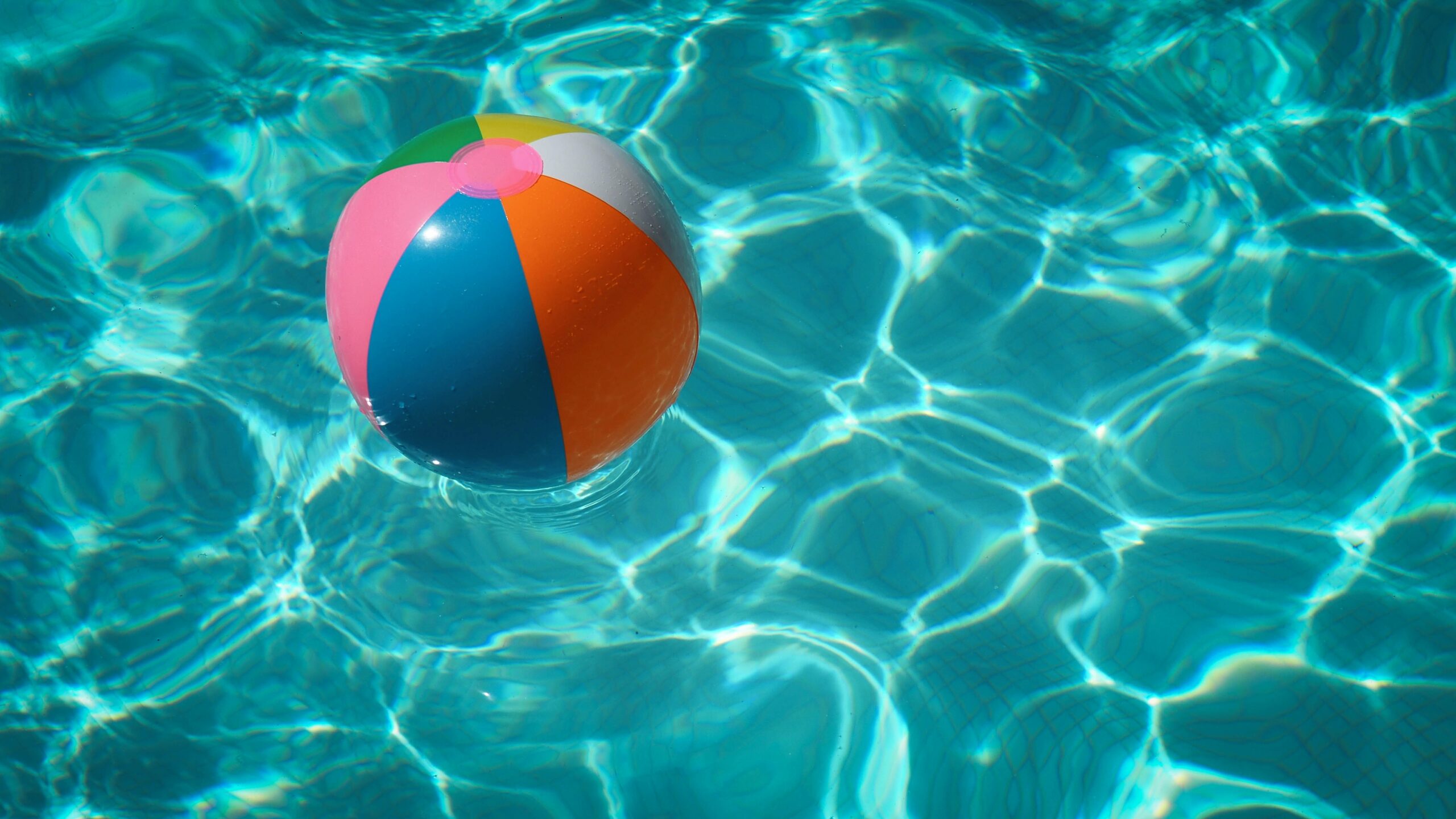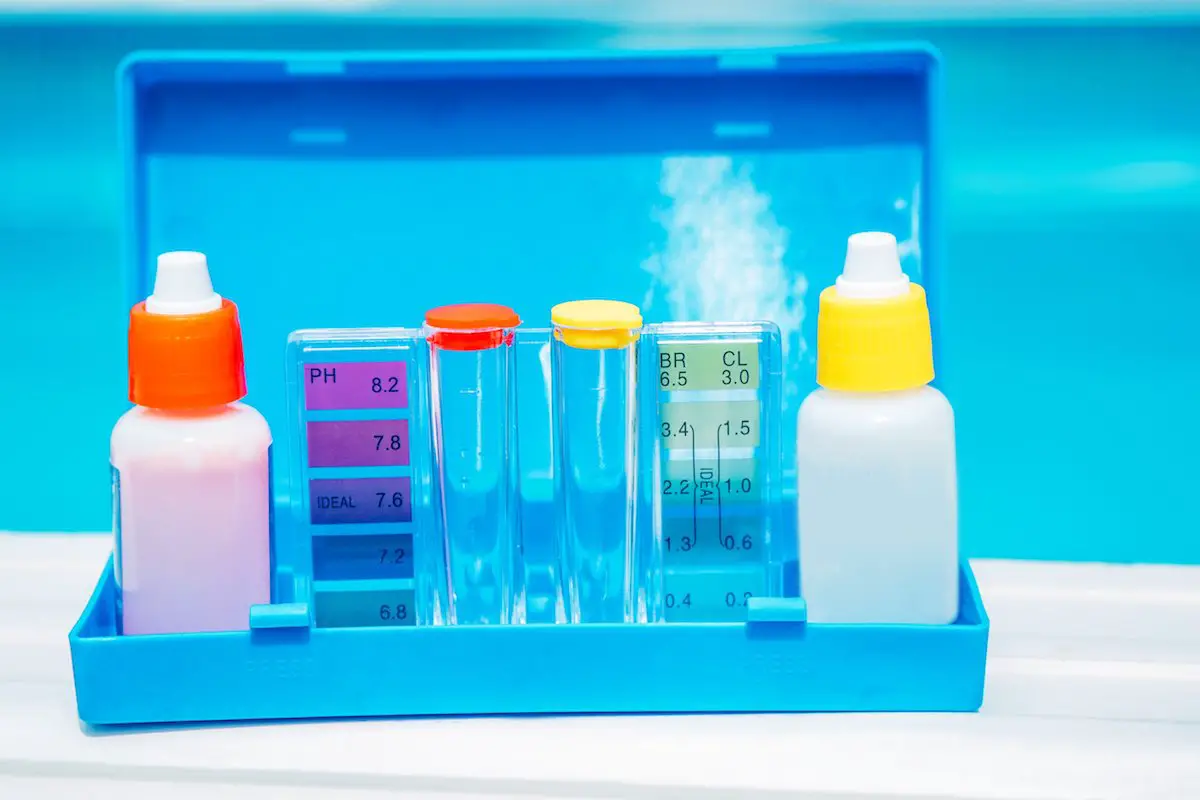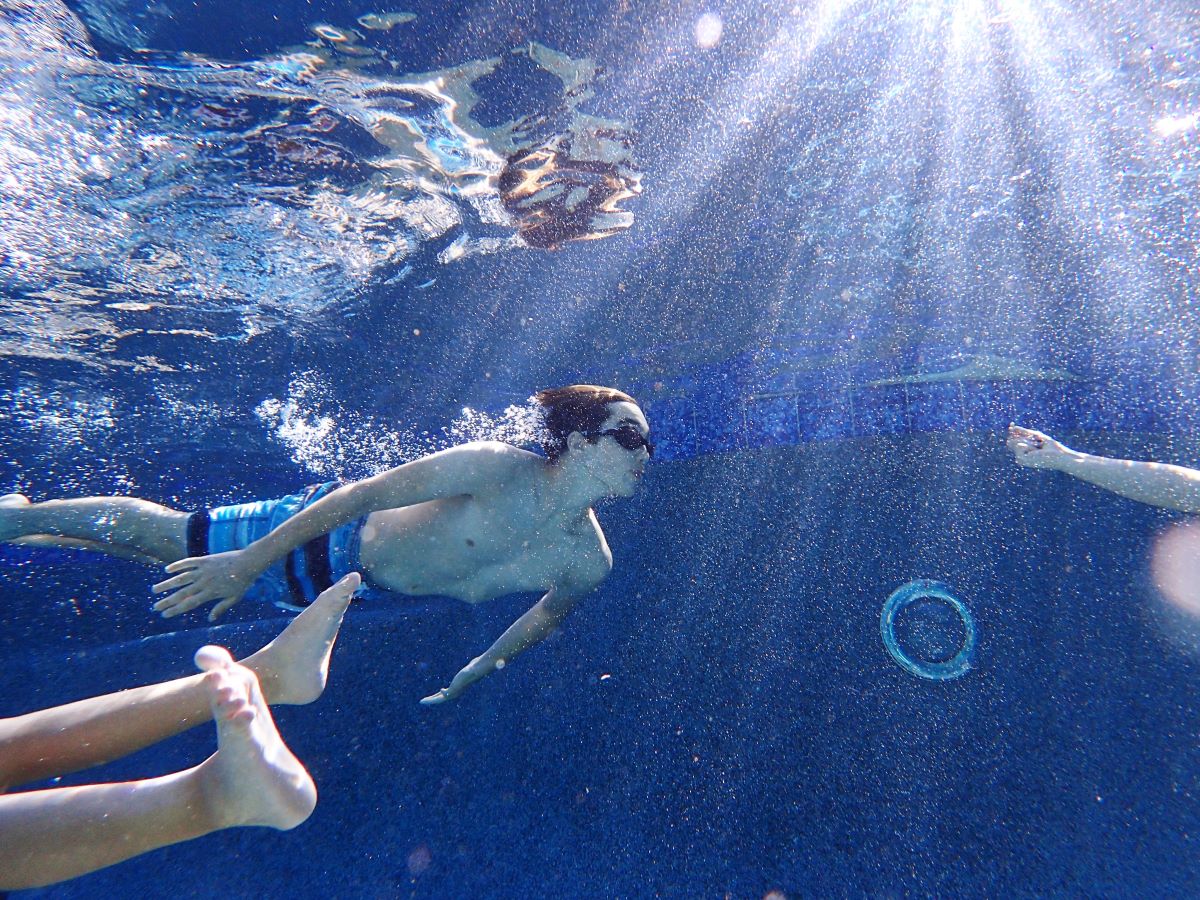Optimize Your Pool Pump and Filter System
Calculate Pool Volume and Flow Rate
To precisely measure how much water your pool holds, start by multiplying its length by its width, and then by the average depth. For pools that are rectangular or square in shape, multiply the resulting figure by 7.5 which will give you the pool’s volume in gallons. For other shapes, replacing 7.5 with 5.9 should suffice.
Let’s say your pool is 20 feet long, 10 feet wide, and averages 5 feet deep. In this case, you calculate the volume like so: 20 ft (length) x 10 ft (width) x 5 ft (depth) x 7.5 = 7,500 gallons. This simple math tells you that your pool holds 7,500 gallons of water.
Next, it’s important to understand the flow rate capability of your pool pump, as this will dictate the efficiency of water filtration and circulation. The flow rate is typically measured in gallons per minute (GPM). Your pump might specify this rate at various levels of resistance which mimics real-life conditions given the distance over which water must travel and any impediments like bends and turns in your pool’s plumbing. Assume a flow rate is given as 60 GPM.
For effective maintenance, your entire pool’s volume of water should pass through the filter system approximately every eight hours. This timeframe is referred to as the turnover rate. To figure out how long it will take for the pump to cycle all of the water in your pool through the filter, use the following formula: ( text{Turnover Time} = left( frac{text{Pool Volume}}{text{Flow Rate}} right) times 60 ).
Using the same example as above with our 7,500-gallon pool and a pump with a 60 GPM flow rate, the calculation would be: ( text{Turnover Time} = left( frac{7500}{60} right) times 60 = 7500 text{ minutes} ). This is the amount of time in minutes required to filter all the water in your pool once. Divide by 60 to convert this into hours. Hence, it would take approximately 125 hours for a single turnover, which appears excessive suggesting a need for a more powerful pump for proper and efficient filtration.
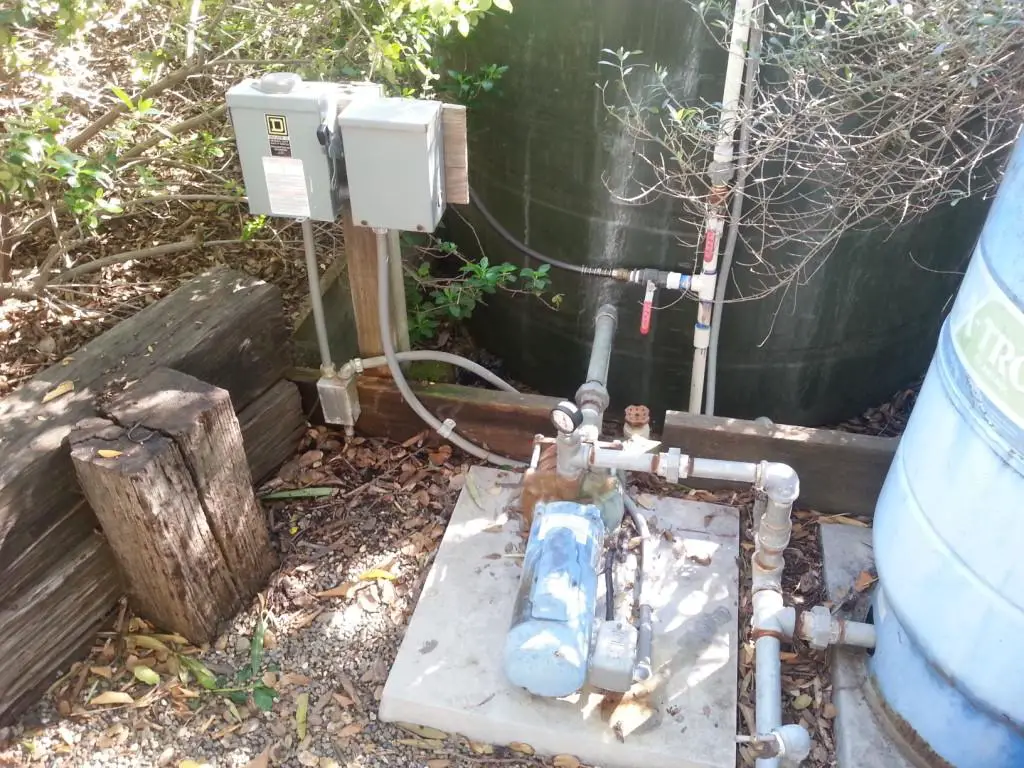
Establish Turnover and Operation Times
Ensure your pool achieves at least two complete turnovers within every 24-hour period to maintain cleanliness and clarity. In ideal circumstances, spread the operation hours of your pump throughout the day to coincide with periods of high usage and higher temperatures, which traditionally exacerbate algae growth and debris accumulation.
Functionally, if your pool’s recommended rate is faster than your current setup can manage, consider running your pump continuously for an elongated period. For example, during peak summer days when temperatures soar and pool use increases, extending the operation time will compensate for the heightened load on the filter system.
On cooler days or when the pool is less frequently used, you may reduce the operating hours accordingly without drastically affecting water quality. However, never cut down below the minimum needed to achieve your two turnovers a day. This flexibility in operation hours optimizes energy usage and adapts to changing environmental factors and usage patterns without surrendering water quality.
Maintain and Monitor Filtration Equipment
Regular maintenance of your pool’s filtration system is essential to keep it running efficiently and to maintain clear, clean, and safe water. Filters play a pivotal role in trapping debris and contaminants, but they can only perform effectively if they are kept in good condition. Depending on the type of filter you have—sand, cartridge, or diatomaceous earth (DE)—the maintenance requirements will vary.
For sand filters, it is crucial to perform a process known as backwashing, typically when the pressure gauge indicates a rise of 8-10 psi over the baseline. This process reverses the flow of water, flushing out accumulated dirt and debris from the sand bed. Additionally, the sand should be replaced every 5-7 years, or as needed based on your specific usage and environmental conditions.
Cartridge filters require periodic removal and cleaning with a hose to eliminate built-up debris. The frequency of this cleaning depends largely on pool usage and the general environment but typically should be done every few weeks during heavy use periods. Replacement of the cartridge is generally recommended every 1-3 years.
Diatomaceous earth filters, offering the finest level of filtration, involve a bit more maintenance. Similar to sand filters, DE filters need backwashing. Additionally, following each backwash, new diatomaceous earth must be added to coat the grids in the filter. It’s fundamental to ensure the proper amount of DE is used, which ties directly back to manufacturer guidelines.
Regardless of the type, visually inspecting the filter system for signs of wear or damage, including checking hoses and connections for leaks, should be a routine part of your maintenance schedule. The start and end of each season are good times for a thorough check, as repairs can be made before small issues develop into more significant problems.
In regions where pools are seasonal, preparatory actions such as deep cleaning the filter system and applying a protective lubricant to O-rings and gaskets ahead of winter can prolong the life of your equipment. In warmer climates where pools are used year-round, periodic checks and balances become more routine and are integrated into general home maintenance tasks.
Elevated upkeep and intelligent handling of your pool’s filtration system extend its service life and optimize its efficiency and effectiveness. This proactive approach ensures that each swim remains a pleasure, unmarred by avoidable mechanical downtime, thereby preserving the aesthetics and health of your pool’s waters.
- Centers for Disease Control and Prevention. Healthy swimming. Accessed June 1, 2023.
- American Chemistry Council. Swimming pool water chemistry fact sheet. Published 2019.
- National Swimming Pool Foundation. Pool & spa operator handbook. Colorado Springs, CO: National Swimming Pool Foundation; 2017.
